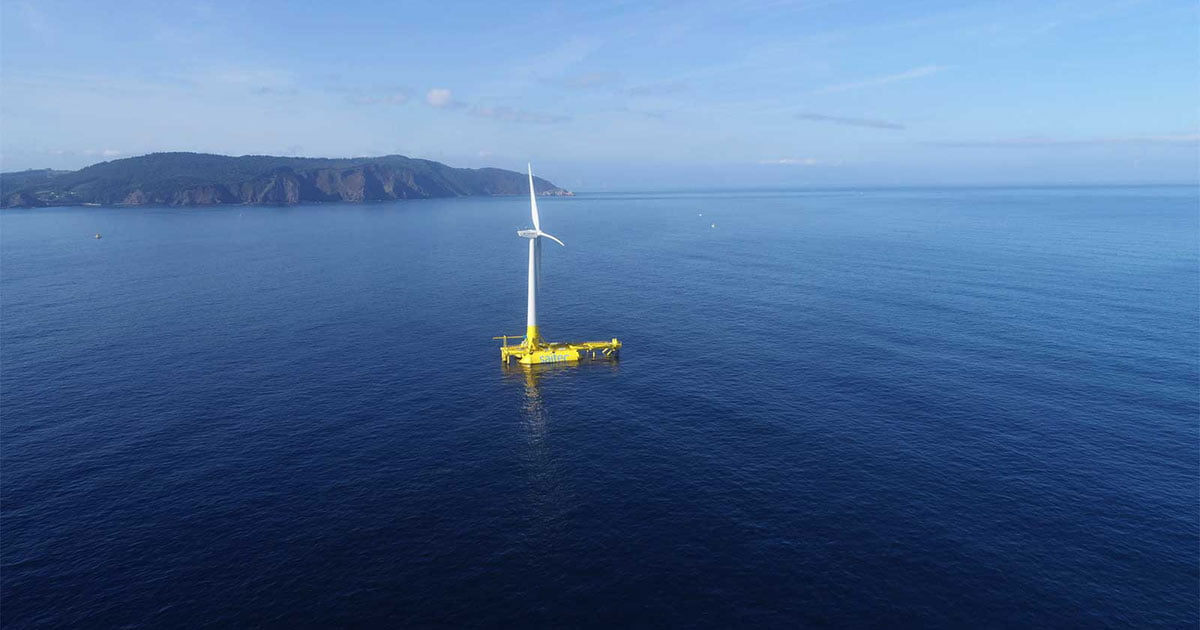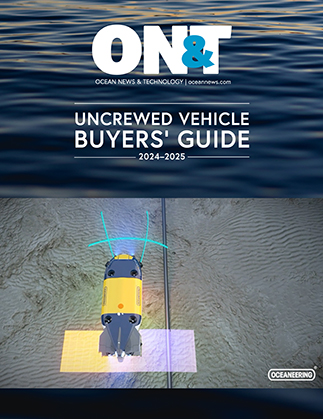The DemoSATH floating offshore wind turbine has been operational off the Basque coast since September 2023 and is providing first-hand insights into the challenges of operating floating wind turbines on the open sea. Now, Spanish engineering firm Saitec Offshore Technologies and global offshore wind player RWE have launched the “DemoSATH Lab” initiative to carry out further environmental monitoring studies around the demonstrator. The DemoSATH Lab research will study the platform’s interactions with the environment focusing on the possible impact on birds, the emission of underwater noise and the interactions of marine life with the structure. The program will last until at least the end of 2025 in order to span multiple seasons and weather conditions.
Javier Del Real, Head of Environment and Stakeholder Engagement at Saitec Offshore Technologies, said: “The knowledge acquired, based on the experience in DemoSATH Lab will allow Saitec Group to improve the ecological fit of SATH technology and develop floating offshore wind projects respectful to the marine environment.”
Martin Dörnhöfer, Director of Floating Wind at RWE Offshore Wind GmbH, added: “As a leading global offshore wind player, we are also pioneering in floating offshore wind. Through the DemoSATH project, we are gaining first-hand experience in the deployment and operations of floating offshore wind technology on the open sea. The DemoSATH Lab research will help us to increase our understanding of key biodiversity aspects of floating offshore wind turbines, such as underwater noise and bird interactions during operation. This will help us to ensure our future development of floating offshore wind is undertaken in coexistence with nature.”
DemoSATH Lab Research Areas
Bird interactions—This research will use data from the DTBird monitoring system that is already installed at the DemoSATH platform. Its dual aims are to increase understanding of the interactions of birds with floating offshore wind turbines and foundations and to improve bird detection module algorithms and responses.
Underwater noise—A comprehensive underwater noise monitoring system has been set-up for the operational phase of DemoSATH. The outputs will be analyzed in comparison to the baseline underwater noise profiles measured before the demonstrator was installed and during commissioning. This will increase understanding of operational underwater noise from floating wind installations and the overall impact on the noise landscape through the project lifetime. Additional information about the presence and behavior of marine mammals around the structure may also be obtained.
Monitoring of marine ecosystem biodiversity—A remotely operated vehicle (ROV) will be deployed periodically to observe how marine life (such as invertebrates, fish and marine megafauna) interacts with the DemoSATH substructure, moorings, anchors and power cables within the local environment. These monitoring activities will provide insights into the presence, abundance and behavior of fauna groups/species around the floating offshore wind turbine.
The DemoSATH platform, located 2 miles off the Basque coast at the Biscay Marine Energy Platform (BiMEP) testing area at Armintza, features a turbine with a capacity of 2 megawatts that was installed in September 2023. Its annual production is equivalent to the annual electricity consumption of approximately 2,000 Spanish households. As a result of this project, floating offshore wind technology was introduced into Spain’s energy mix for the first time. The commissioning marked the beginning of a two-year operational period to gather data about the behavior of the “Swinging Around Twin Hull”—SATH technology, developed by Saitec Offshore Technologies. The success of the project is due to the combined capabilities of its partners: Saitec Offshore Technologies, the designer of the SATH technology, and project developers RWE, with its extensive expertise in the offshore wind sector, and Kansai Electric Power Co. Inc. (KEPCO), with its experience in the energy market.

